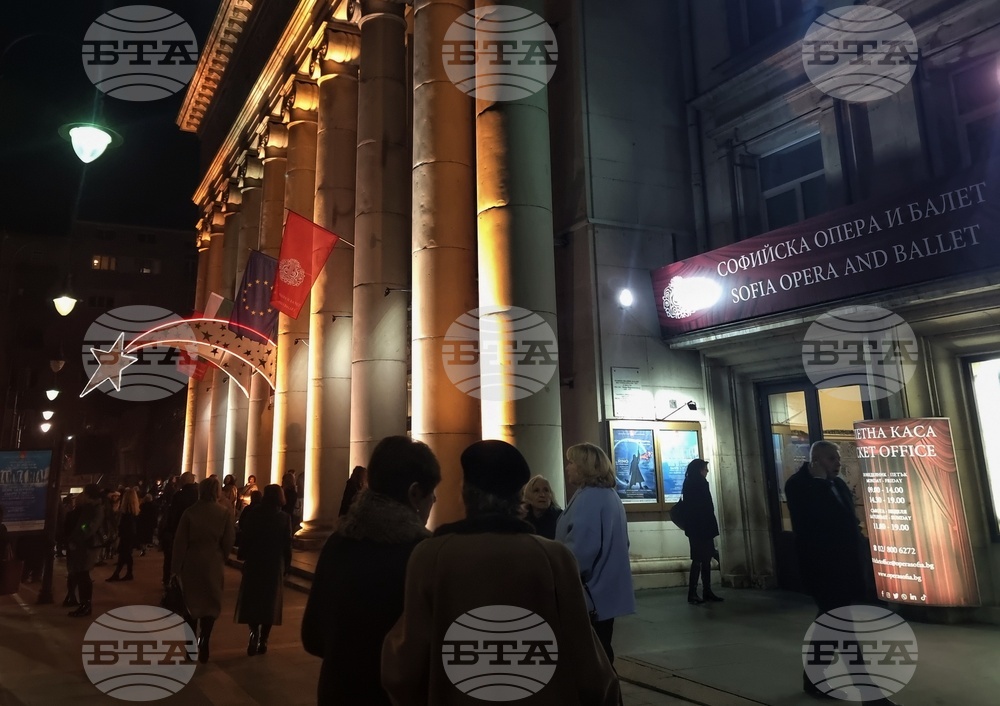site.btaBulgarian Artist, Spanish Countess, US Businesswoman: Nadya Nozharova's Fairytale Life


Nadya Nozharova, also known as Countess Nadya de Navarro Farber, was a Bulgarian operetta singer and actress, US entrepreneur, philanthropist and Spanish countess. To many people her long and eventful life (12. 11. 1916 - 18. 04. 2014) stands next to a fairytale.
She was not to be considered a Cinderella, as suggested by some media, for she came from a well-to-do family. An interesting detail of the future movie star biography is the pioneering effort of her father to develop cinema business. At the beginning of the XX century Mateya Nozharov, together with his friend Kosta Minkov, constructed a projection device. The two opened the first cinema in the town of Ruse, named “Bioscope”, but the enterprise proved unsuccessful. In 1911 they tried again, opening the “Splendide” cinema, which was destroyed by a fire. A third attempt was made in 1912: Nozharov and his wife rented the salon of the "Fischer" restaurant in Ruse and opened the "Apollo" cinema…
Nadya Nozharova was born in Pleven. She studied at the American girls’ school in Lovech, perfecting English language. At the age of 18, she joined the operetta theatre of Angel Sladkarov, to whom she married. Nozharova toured with his operetta theatre, and after the disbanding of the group, she played in other theatres like “Bulgaria” theatre, the “Odeon”, and “Cooperative Theatre”. Her physical attractiveness, artistic talent and specific, slightly coarse mezzosoprano voice, made of her a celebrity.
The huge success in the operetta “Prodadena Ljubov” [Sold Love] (music by Yosif Tsankov, libretto by Petar Uvaliev), in the Odeon theater, made her song „I Live for Love“ a hit. Her portrait appeared on the pages of “Byalo i Cherno” [White and Black] magazine (Bulgarian biweekly magazine dedicated to cinema and culture). Her invigorating performance of “La Cucaracha” (recorded by Sofia-based Balkan gramophone record company could be heard from the open windows of many Bulgarian towns.
In 1942 she starred in the Hungarian-Bulgarian movie “Izpitanie” [Trial], directed by Hrisan Tzankov. In the movie she rivals some of the best Bulgarian actors of the time (Ivan Dimov, Krastyo Sarafov, Lili Popivanova). And, of course, she sings “Life Is a Play”.
As befits a star, her life was wrapped up in hearsays, gossips, and tales. Most of these could not be substantiated, all the more so that in her later years she herself contributed to creation of mythology. (Even her birthdate is disputable.) Most gossips claimed affairs with various public figures from Bulgaria and abroad, and she lived a life in the limelight of public attention.
Nozharova divorced in 1940, and the same year married the Papal count de Navarro, a Spanish diplomatist in Vatican City (hence her title “countess”). The family lived in Monte Carlo until count de Navarro’s death; that same year, Nadya left for New York. There she met Sid Farber, who was just starting a prosperous construction and real estate business. They married in 1958 and settled in Brookhaven, Long Island, NY. Sid Farber died in 1985, and Nadya married Yuri Farber (not related to her deceased husband).
All her life, she travelled extensively. She owned estates in US, France and Monte Carlo, and a Moorish-style castle in Saint Croix, US Virgin Islands, which she designed herself. She was known by her donations (esp. to the John T. Mather Memorial Hospital in Long Island). A landmark pink mansion near the tip of Belle Terre was featured prominently in the 1989 film She-Devil (starring Meryl Streep).
After leaving Bulgaria after 1940 she returned only once in 1962. There are legends about her return, most of which are urban fiction. She attended a performance at the Sofia opera and gave a reception to her fans and admirers. Her visit aroused unprecedented interest and people flocked to see her, for she was honoured by many as one of the symbols of Bulgarian culture. And she is still remembered in full splendor and glory of her stage presence. To quote Dragan Tenev, astute chronicler of national cultural life:
“She was black-haired and slightly cross-eyed, but she had wonderful legs, which she could display superbly on stage in her signature bit: leaning against a street lamp, singing “I Live for Love.” At this performance of hers, the audience at the Odeon [theatre] always fell into ineffable rapture and started applauding her madly. But, in her discreet intelligence, Nozharova did not move: illuminated by the spotlights, she triumphed motionless.”
/KV/
news.modal.header
news.modal.text